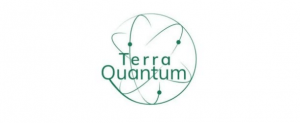Quantum News Briefs June 16: Terra Quantum breaks records in quantum key distribution, paving way to offering unprecedented security over existing, global fiber-optic networks; £75m for UK quantum computer, sensor prototypes; U of Tokyo scientists successfully arranged nanoscale quantum sensors on desired targets + MORE

Quantum News Briefs June 16: Terra Quantum breaks records in quantum key distribution, paving way to offering unprecedented security over existing, global fiber-optic networks; £75m for UK quantum computer, sensor prototypes; U of Tokyo scientists successfully arranged nanoscale quantum sensors on desired targets + MORE.
Terra Quantum breaks records in quantum key distribution, paving way to offering unprecedented security over existing, global fiber-optic networks
 Researchers with Terra Quantum, a leader in quantum technologies, have set a world record for securing long-distance communications with quantum encryption, paving the way to offering enterprises with an affordable, unprecedently secure way to send data over existing fiber-optic networks. Quantum News Briefs summarizes the announcement.
Researchers with Terra Quantum, a leader in quantum technologies, have set a world record for securing long-distance communications with quantum encryption, paving the way to offering enterprises with an affordable, unprecedently secure way to send data over existing fiber-optic networks. Quantum News Briefs summarizes the announcement.
Terra Quantum successfully sent quantum-secure communication on optical-fiber cables over 1,032 kilometers at significantly higher data transmission rates (key rate) than the previous record (previously: 0.0034 bits per second; now: 34 bits per second) (arXiv Paper). The experiment validates Terra Quantum’s novel approach to long-range quantum-secure communications, utilizing similar infrastructure to that is used in today’s existing telecommunication networks. The approach was first brought forward by Terra Quantum in 2021 and has recently been published and thereby confirmed, in the peer-reviewed journal Nature: Scientific reports.
Markus Pflitsch, Founder and CEO of Terra Quantum said, “Terra Quantum’s approach makes global quantum-secure data transmission scalable without specialized quantum equipment. This is the start of the highest level of cybersecurity.”
The world record achieved by Terra Quantum builds on a new theory of Quantum Key Distribution (QKD) encryption that lifts previous constraints on distance and data transmission rates in quantum-secure communication. Other approaches require deployment of specialized quantum transmission hardware along the used fiber, i.e., quantum amplifiers, or use special purpose fiber to reach longer distances of QKD encryption.
On the contrary, Terra Quantum has formulated and validated an approach that utilizes conventional optical-fiber and optical amplifiers. Similar hardware is already employed in today’s communication infrastructure. Users of the technology only require quantum encryption and decoding hardware on site at the sender and receiver.
On this basis, Terra Quantum achieves significantly higher QKD rates (i.e. secured data transmission speed) at longer distances than all previous approaches with a transmission rate of 34 bits per second over 1,032 kilometers. The latest experiment by scientists from the University of Science and Technology of China, the Jinan Institute of Quantum Technology, and the Shanghai Institute of Microsystem and Information Technology achieved a 1,002 kilometers distance with a rate of 0.0034 bits per second.
Click here to read announcement in-entirety.
£75m for UK quantum computer, sensor prototypes
 UK Research and Innovation (UKRI) has announced £45m of funding for quantum technology projects, while the National Quantum Computing Centre (NQCC) is backing a number of quantum computer prototype testbeds in a £30m project. Quantum News Briefs summarizes a June 15 EENewsEurope article by Nick Flaherty.
UK Research and Innovation (UKRI) has announced £45m of funding for quantum technology projects, while the National Quantum Computing Centre (NQCC) is backing a number of quantum computer prototype testbeds in a £30m project. Quantum News Briefs summarizes a June 15 EENewsEurope article by Nick Flaherty.
The UKRI Technology Missions Fund is providing £8m for 12 projects exploring quantum technologies for position, navigation and timing (PNT), £6 million for 11 projects working on software enabled quantum computation and £6 million for 19 projects’ feasibility studies in quantum computing applications.
£25 million is supporting seven projects for quantum-enabled PNT via the Small Business Research Initiative (SBRI)
As part of a wider quantum computing mission, the NQCC is also investing £30 million to commission the development of prototype quantum computers in the UK.
The NQCC is partnering with Innovate UK to deliver the competition. This opportunity is currently open for expression of interest but closes on 26 June 2023.
One of 12 projects researching position, navigation and timing (PNT) is led by Dr Joseph Cotter from Imperial College London. It aims to harness quantum physics to develop a new type of sensor technology that can be used underwater or underground.
It will explore how quantum sensors can complement the use of the global navigation satellite systems (GNSS) which can be vulnerable to adverse weather conditions, jamming and has limited capability underwater and underground.
There are 11 software-enabled quantum computation projects will advance algorithm capability to improve the performance of quantum computers working with NQCC. One project, led by Dr Aleks Kissinger at the University of Oxford, will develop a new generation of quantum compilers. Click here to read the EENewsEurope article in-entirety.
U of Tokyo scientists successfully arranged nanoscale quantum sensors on desired targets
 The delicate work of positioning quantum sensors at the nanoscale as been completed by researchers from the University of Tokyo, enabling them to detect incredibly minute differences in magnetic fields, according to June 14 article by Amit Malewar in TechExplorist.
The delicate work of positioning quantum sensors at the nanoscale as been completed by researchers from the University of Tokyo, enabling them to detect incredibly minute differences in magnetic fields, according to June 14 article by Amit Malewar in TechExplorist.
The project aimed to create stable quantum sensors that could be put close to objects like discs and wires. To date, however, it has been difficult to precisely arrange atoms in a way that allows for the ability to detect minute fluctuations in the magnetic field.
Kento Sasaki, an Assistant Professor at the University of Tokyo, says, “Although individual quantum sensors are small, their spatial resolution is restricted by the distance between the sensor and the measurement target. To solve the problem, the researchers established a technique for creating nano-sized quantum sensors on the surface of the measurement target.”
The team used two-dimensional hexagonal boron nitride, a thin crystalline substance having nitrogen and boron atoms, as quantum sensors. Boron vacancies or lattice defects are found in this material. As a quantum spin sensor discovered in 2020, the boron vacancy defect is the new kid on the block.
Sasaki said, “Scientists are now planning to apply this technique for research on condensed matter physics and quantum materials. It will enable direct detection of the magnetic field from, for example, peculiar states at edges of graphene and microscopic quantum dots.”
Beginning to revolutionize how humans see microscopic environments and hence comprehend macroscopic features are atom-sized quantum sensors. Their uses go beyond fundamental scientific inquiry. They can map subsurface ecosystems, picture human brains, precisely geolocate, and track geological movements and volcano eruptions. The prospective applications of Sasaki and his team’s nanoscale quantum sensors in semiconductors, magnetic materials, and superconductors are still being explored. Click here to read Tech Explorist article in-entirety.
US and UK unite in quantum research: A cross-Atlantic partnership for scientific discovery
 The United States and United Kingdom are sharing expertise and capabilities in the blossoming field of quantum information science across the pond. This new partnership between the countries will lead to new quantum devices, insights into their performance, ways to harness quantum information and discoveries in fundamental physics.
The United States and United Kingdom are sharing expertise and capabilities in the blossoming field of quantum information science across the pond. This new partnership between the countries will lead to new quantum devices, insights into their performance, ways to harness quantum information and discoveries in fundamental physics.
Research will be conducted under the Superconducting Quantum Materials and Systems Center, hosted by the U.S. Department of Energy’s Fermi National Accelerator Laboratory, with the United Kingdom’s National Physical Laboratory and Royal Holloway, University of London. With the additional institutions, the SQMS Center collaboration now totals 28 partners.
These new additions to the SQMS Center are rooted in goals to increase cooperation in the field of quantum information science between the U.S. and U.K. governments. These goals were set in a November 2021 joint statement that emphasizes the importance of growing an ecosystem of international partners with shared values. The statement also highlights the impact of quantum technology on global health security, climate change and efficient resource use.
“Our new U.K. partners bring unique characterization techniques that complement the SQMS Center’s strengths,” said Anna Grassellino, director of the SQMS Center. “This partnership advances the center’s mission of identifying and overcoming fundamental obstacles that interfere with quantum device performance, while also finding ways to use quantum devices to harness quantum information and perform physics and sensing experiments.” Click here to read announcement in-entirety.
Sandra K. Helsel, Ph.D. has been researching and reporting on frontier technologies since 1990. She has her Ph.D. from the University of Arizona.



















